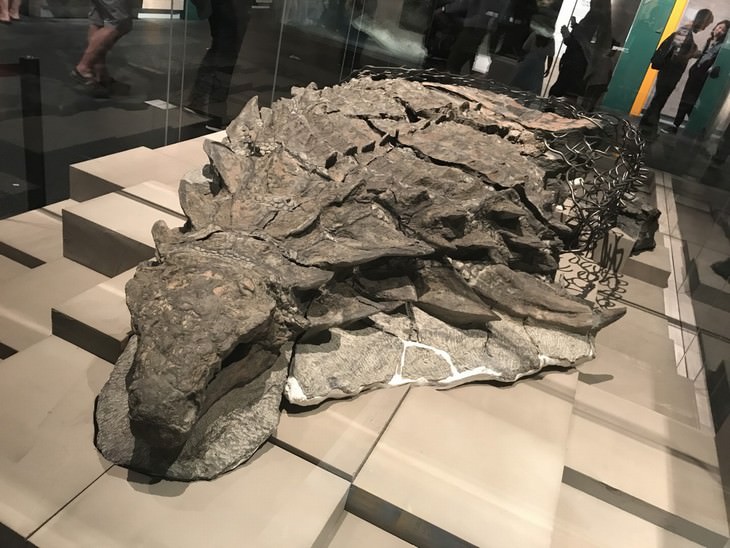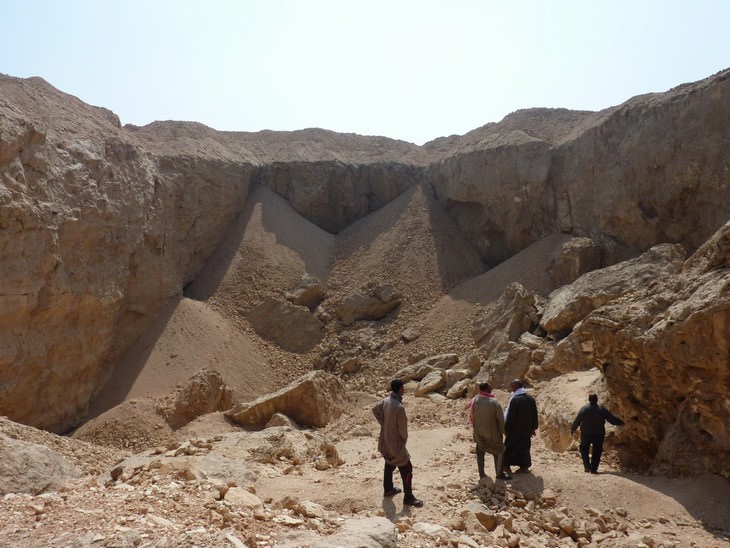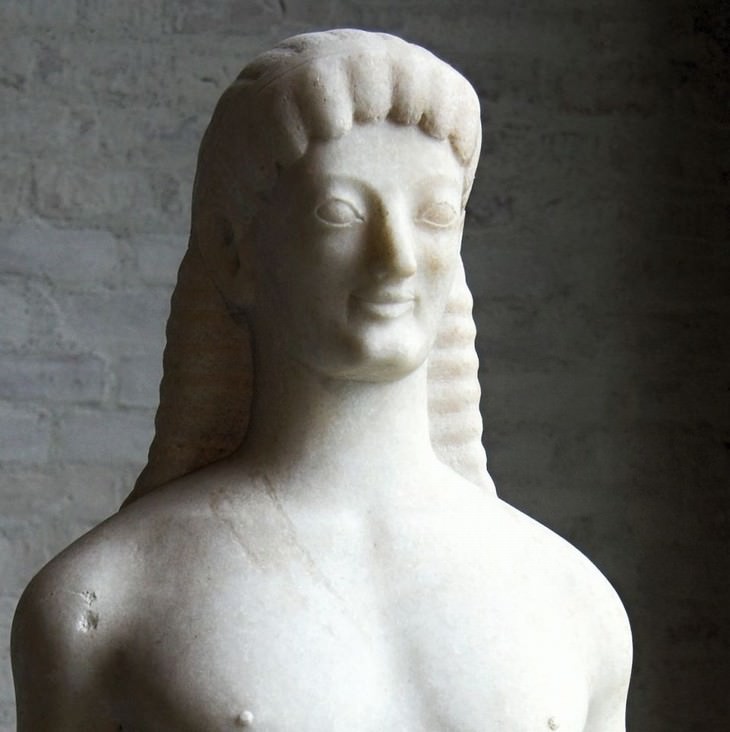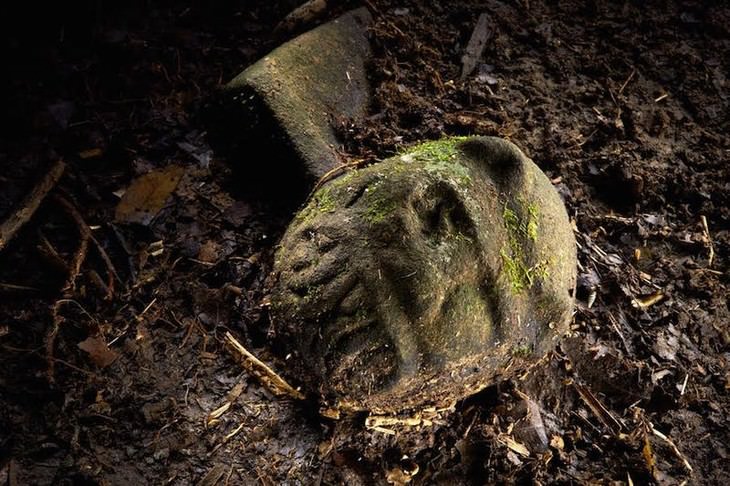1. Unbelievably Intact Remains of a Nodosaur Found in Canada
Similarly to many remarkable discoveries, this one was a complete accident. In 2011, an unsuspecting excavator operator in the Alberta Millennium Mine literally dug into a hard piece of rock which turned out to be a dinosaur mummy. As you will surely know, in the vast majority of cases, paleontologists manage to find fragments of bones or, when lucky, the entire skeleton of dinos. This specimen, however, is complete with scales, skin and even internal organs, an unprecedented finding because it’s so well preserved.
The remains belong to a species of dinosaur called a nodosaur, which were herbivorous dinosaurs that inhabited our planet between 110 million and 112 million years ago. They were five and a half meters (18 ft) long and weighed 1360 kg (3.000 lb). Visitors can now find this rare nodosaur fossil at the Royal Tyrrell Museum of Palaeontology in Alberta, Canada.
2. Ancient Ramps Discovered in Egypt Reveal How the Great Pyramids Were Built
The mystery of how the Great Egyptian Pyramids were constructed is the topic of many a history documentary and numerous publications. Archeologists hypothesized that the enormous limestone blocks used to build the pyramids were moved to the location and compiled using temporary ramps that would be removed upon completion for decades, but it wasn't until 2018 that researchers actually managed to find one of such ramps.
The 4,500-year-old ramp found in an ancient alabaster quarry in Hatnub had a staircase on both sides and several post holes that would enable the pulling of a sled loaded with alabaster at a high angle. Researchers believe that an identical technique could be used to construct the pyramids of Giza as well.
3. The Discovery of the Ancient Greek City of Tenea
The discovery of the ancient Greek city of Tenea is proof that observation is the key to great discoveries. In 2013, archeologists examined an area near the village of Chiliomodi in the Peloponnese region of southern Greece and found some small finds, such as pottery. Excavations began, and in 2017, a two-chamber burial place was discovered. A year had passed, and as the excavations continued and spread, an entire ancient city complete with stone walls, houses, and marble floors were unearthed.
About 200 rare coins, vases, jewelry, and sculptures, as well as burials dating back to around 300 BC, were found, suggesting that Tenea was an independent city. What's even more exciting is that in 2019, a huge complex of baths taking up an area of 500 square meters (5.400 sq ft) was also found, suggesting that the ancient city was even bigger than archeologists estimated initially.
4. Viking Women Were Warriors
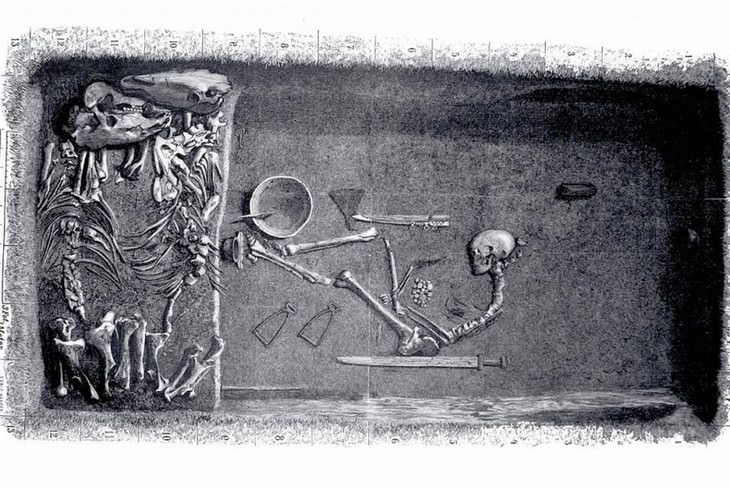
Image Source: Wiley Online Library/The Authors American Journal of Physical Anthropology Published by Wiley Periodicals Inc./CC BY 4.0
We often imagine Vikings as ruthless men wearing horned helmets and invading neighboring countries in their epic looking longships, but the more we study this ancient culture, the more we understand that most of what we believe about Vikings is, in fact, not true. For one, we have known for a while that the horned helmets are a historical inaccuracy that was popularized by mainstream culture. However, what none of us has actually known until September 2017 is that some of the Viking warriors were actually women.
This claim is confirmed by the DNA analysis of the remains of a warrior from the 10th century, who had been buried in a grave in Sweden along with two horses, various weapons, a game board and a set of gaming pieces. The burial attributes also suggest that the person buried was a high ranking warrior and was well versed in military strategy.
This specific grave was discovered in the 1800s, but historians assumed the remains were that of a male until the DNA extracted from the bones concluded that the skeleton was that of a woman in her thirties.
5. Another Stonehenge in Spain?
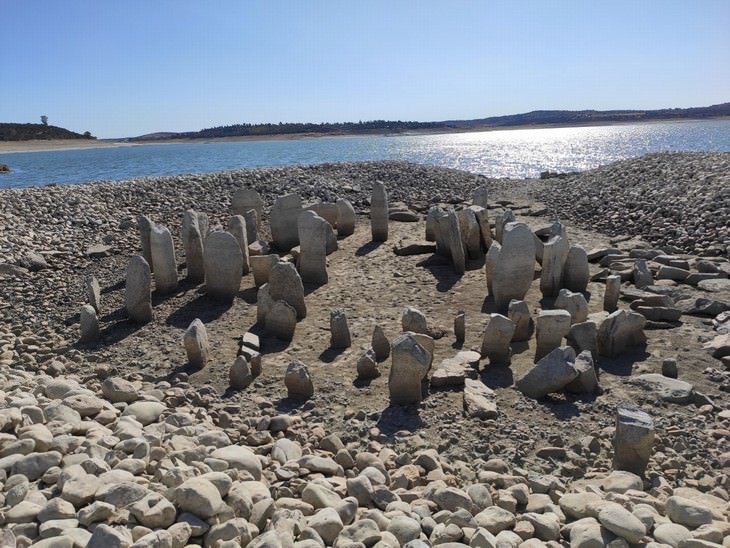
The Valdecañas Reservoir in western Spain was hiding The Dolmen of Guadalperal, known under its popular nickname 'Spain’s Stonehenge' for nearly a hundred years until severe droughts have revealed the complete structure in 2019. The oval stone arrangement consists of 150 granite stones positioned upright. It is 4.000 years old, and it was discovered in the 1920s, but the drought let researchers take a closer look at the henge.
What archeologists managed to discover is that some of the stones have carvings of human and snake figures, as well as a 21-meter (69 ft) long corridor leading up to it. The general consensus is that the structure was a sun temple and a burial ground.
6. A Lost Civilization Discovered in the Jungle of Honduras
Deep within the Moskitia rainforest of Honduras lies an ancient city that was lost for nearly half a millennium and was rediscovered in 2012. The city and 200 other archeological sites throughout the rainforest belong to a mysterious civilization that lived alongside the Mayans and were influenced by them but had a distinct culture.
Some historians believe that the capital of this mysterious civilization is the mythical White City, also known as the City of the Monkey God - an ancient city of unimaginable wealth that simply vanished 600 years ago. What's even more puzzling is that the inhabitants of the city recently discovered seem to have likewise gathered all of their prized possessions one day, buried them in the city center and disappeared.
Researchers now believe that the population was likely struck by infectious disease, likely even that brought by the first European colonizers. Sadly, what remains of this civilization today are but the remains of a pyramid, an ancient courthouse and many intricately carved stone statues, particularly those depicting jaguars, as well as a ton of unanswered questions.

